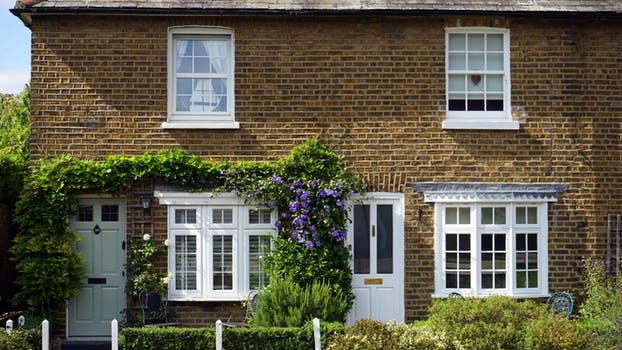Are you dreading the tons of preparation you need to go through to get your garden ready for next spring? Are you sick of constantly pulling weeds and hitting your face with the shovel?
Then no-dig gardening is just for you!
Despite sounding like a 90s’ infomercial, the above statements are actually one of the main reasons why people give up on gardening or never even start learning. So if you’ve found yourself in those issues, keep on reading!
In this article, we will explain what no-dig gardening is, the advantages and disadvantages, as well as how to create a no-dig garden from scratch.
What is a No-dig Garden?
The name is pretty self-explanatory. It’s a gardening method that does not require the standard techniques you find everywhere else, such as ploughing, troughing, digging, tilling, cultivating the soil, and technically anything else that disturbs the earth.
It may sound a bit strange, especially if you’re used to this routine of overturning the soil every Autumn to prepare it for next year. However, recent studies have shown that this action may result in more harm than good for your garden.
Why is that?
Well, the soil is actually an entire ecosystem that contains millions of beneficial insects and microorganisms. They are the ones that improve the structure and quality of the soil, providing it with nutrients and making sure they are equally distributed. Actions like digging disturb this amazing cycle, kill the beneficial organisms and lower the chances of enjoying healthy crops.
For centuries now, people have been meddling with the natural processes in the ground, adding mulch and similar things, intending to improve it, instead of just leaving it alone.
No-dig gardening is actually the most natural way of taking care of your crops while helping the Earth and all its living organisms.
Benefits of No-dig Gardening
In the previous section, we mentioned the main reasons why a no-dig garden is the better choice for the soil and the critters. But how is it better for you?
Let’s take a look at the main advantages of no-dig gardening:
- Saving you time and energy
Remember all of the activities that we mentioned at the beginning? You don’t have to do any of them! Enjoy the benefits of growing your own vegetables without the hours of backbreaking work.
- Fewer weeds
By digging and turning the soil, you’re helping dormant weeds get to the surface and germinate. When you stop that, they don’t have the chance to multiply and grow big; thus, you don’t have to pull them out constantly.
- Helps nature
By keeping the soil intact, you help out everything that lives there and helps your garden thrive. We’re talking about nutrients, root systems, microorganisms, worms, bugs, and much more. Not only that, but you will also keep the balance between soil pests and predators. It’s been proven that no-till soils suffer from fewer pest invasions than other gardens.
- Better soil quality
Keeping this precious ecosystem alive and healthy will also improve the soil’s structure and overall quality. All the tiny worms and bugs left in the ground will complex tunnel systems that will improve drainage and water retention and help prevent soil erosion.
How to start a No-dig Garden
Now that you’re aware of the significant no-dig garden benefits, let’s see how you can make your own. In the following chapter, we will take a closer look at the following:
- Location.
- Tools and equipment.
- Preparations.
- Layering process.
- Planting.
Choosing a Location
One of the most incredible benefits of the no-dig garden is that you can put it anywhere you’d like. And we mean anywhere. It can be on grass, raised bed of soil, a wooden deck, or even concrete. As long as you lay the proper foundation, your no-dig garden will thrive in any location, as long as it has enough sunlight – around 5-6 hours per day. So when you decide where to put it, the sun is the priority.
Tools and Equipment
Whether you’re starting on soil or a solid surface like concrete, you’ll need the same materials:
- Sticks, straw, leaves, twigs – for concrete, grass and wood foundations.
- Cardboard and newspapers.
- Compost – you can also make it yourself from kitchen scraps. See how you can do it here.
- Animal manure.
- A funky tune.
Preparations
The following steps are required if you’re using grass or concrete as your base for a no-dig garden.
- Concrete foundation – Place a layer of leaves, sticks and twigs, whatever you have. They will be the base that will provide proper drainage to your garden. Once you feel like you’ve layered enough of them, place newspapers or cardboard on top, enough to cover everything.
- Grass foundation – Start by mowing the grass low. After that, you can either put a layer of sticks, leaves and similar, to improve drainage or just put the cardboard/newspaper directly on the grass. The choice is yours. We recommend placing a later of twigs and straw, as you can only benefit from that.
The Layering Process
Now that you have the foundations with newspaper or cardboard on top, you can layer the other ingredients in the below order.
- Straw – Place your first layer of straw (4 inches) and water.
- Manure/Compost – You can go with one or both; either option is good. Add a layer on top of the straw and water again.
Now repeat until you have a bed that is deep enough – ideally around 15 inches or above.
Planting
The sowing and maintenance of your seeds or seedlings are the same as they would be in a “normal” garden. Follow the instructions for the specific plant, water them as you would, and everything will be okay.
Some people say that planting seeds in compost can affect their health and lifespan, but that is not true. Just make sure they are watered properly and deep enough.
If you want some extra enrichment, put a layer of mulch on top of the compost – it will insulate the soil and improve its quality.
When it comes to no-dig gardening maintenance – your only task is to put a new layer of compost twice a year. That’s it, and you’re ready!
Conclusion
Starting a no-dig garden is pretty straightforward and can be done with minimal supervision afterwards. And the best part is that you can enjoy the benefits of having your garden without all the work that usually comes with it. On top of that, you’re also helping nature and all the little critters that live in the soil.
So what are you waiting for?





